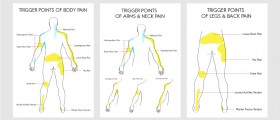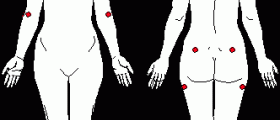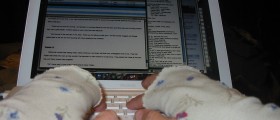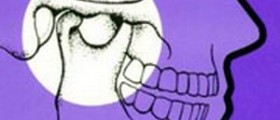
Symptoms
We will see now which symptoms are most commonly associated with the soft tissue rheumatism. Since there are several types of soft tissue rheumatism, they all have different symptoms. The first on the list are the tendinitis and bursitis and they cause similar symptoms. The pain felt usually comes from the heel, back, elbow, shoulders and so on. The signs of this condition are hip pain and trigger finger as well. Another name used for this condition is localized soft tissue rheumatism. Next is the myofascial pain syndrome and it causes regional pain caused by the pressure placed on the trigger point. Tender area in the muscles of the belly is called trigger point and once pressure is applied on it, tingling or pain is felt. A muscle located where the trigger point is, is usually shortened or has a spasm, so stretching this muscle will inflict pain. Pain caused by applying pressure on the trigger point can be reduced with the injections administered in this location. The last type of soft tissue rheumatism is fibromyalgia and it causes widespread pain and ache. Pain can become stiffness as well, and both of the symptoms sometimes become chronic.
Treatment
The type of the soft tissue rheumatism is the main factor behind the use of the treatment option. Patients usually get NSAIDs. Also, stretching and application of ice two or three times a day is needed for the tendinitis and bursitis, and this should prevent the problem from appearing again as well. NSAIDs are given for the myofascial pain syndrome, but this problem will also benefit from the massage therapy, so you can try yoga and flexibility and stretching exercises. Remember that the professional has to diagnose your problem and decide on the course of the treatment.




-vs-Trigger-Points-(Myofascial-Pain-Syndrome)_f_280x120.jpg)












Your thoughts on this
Loading...